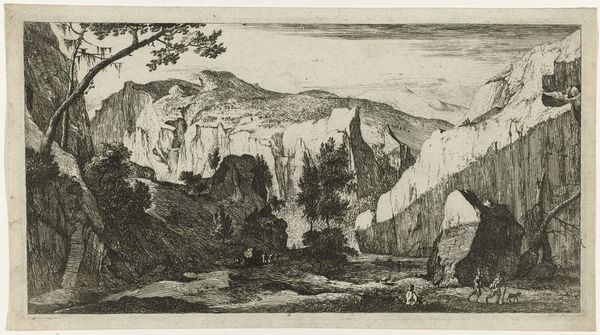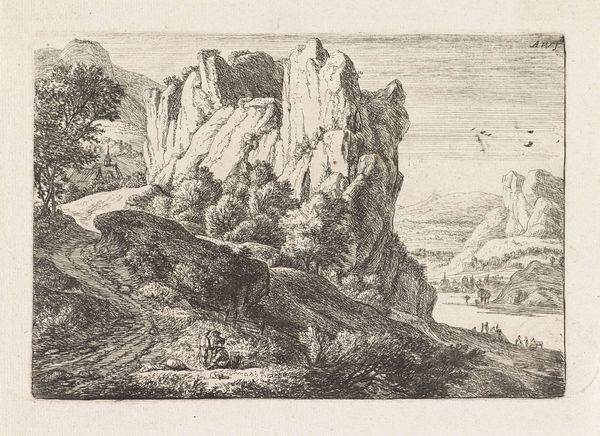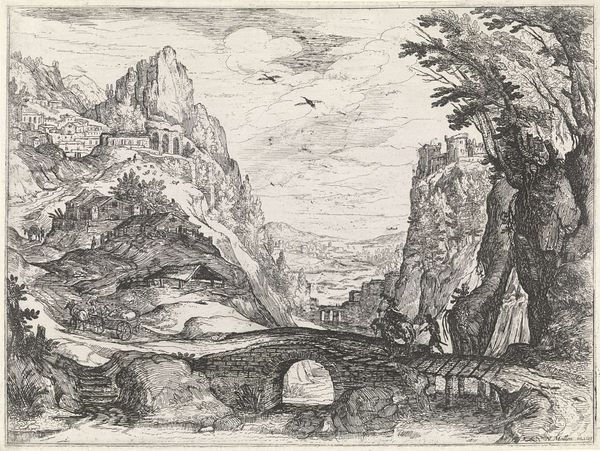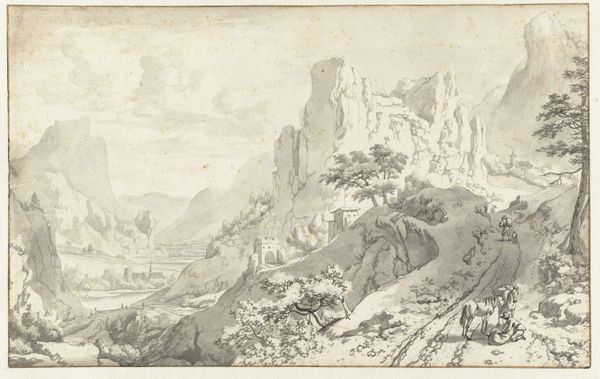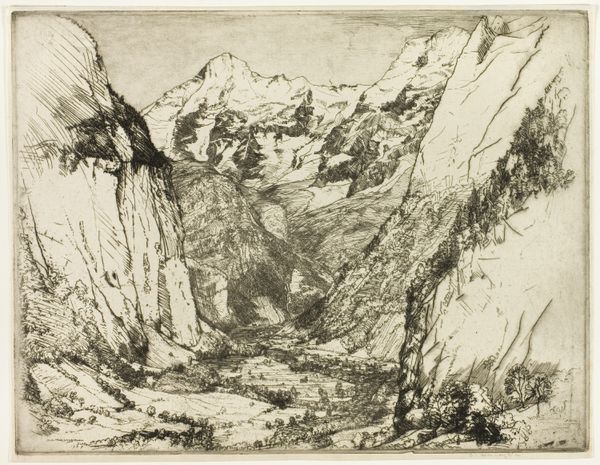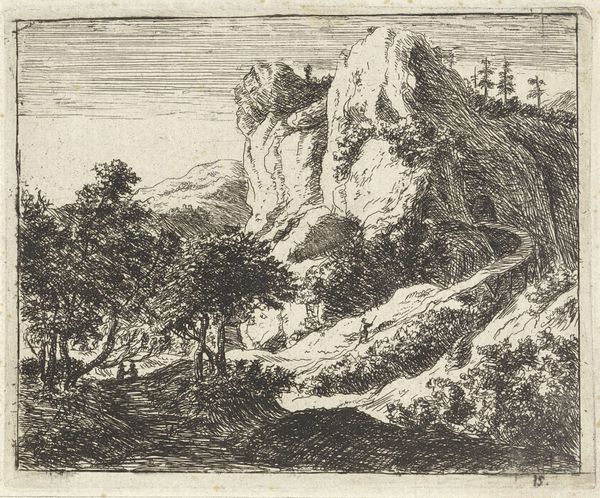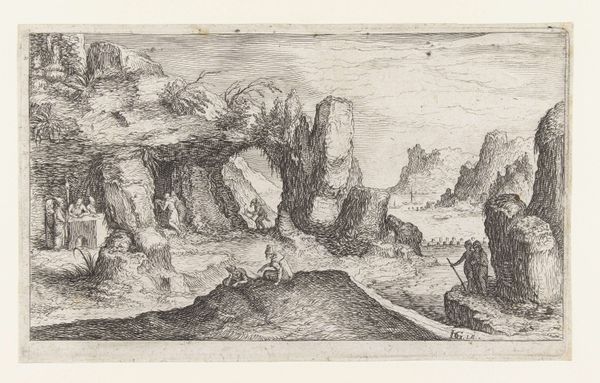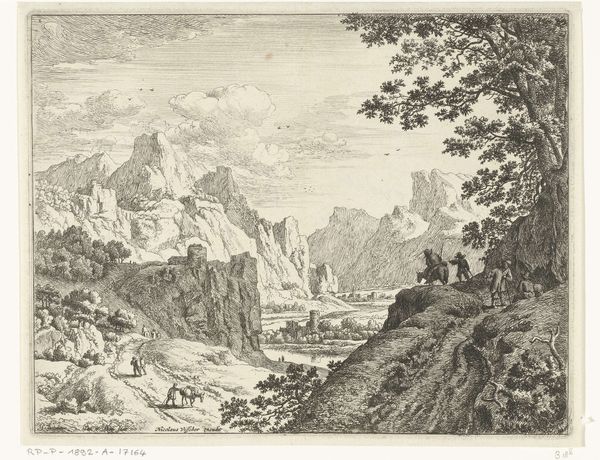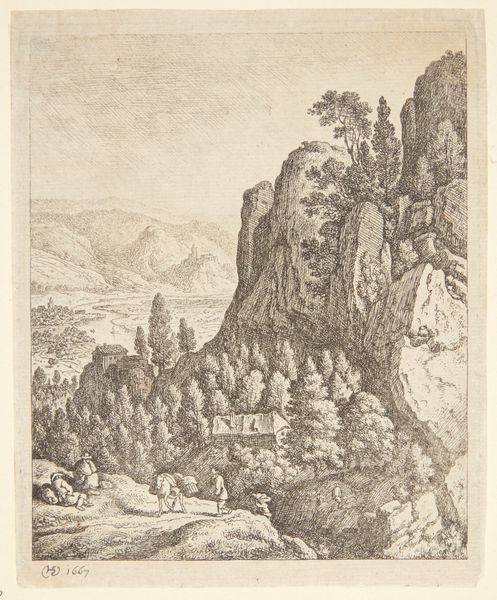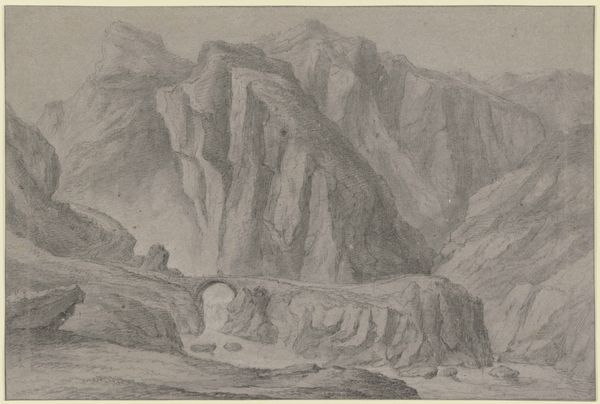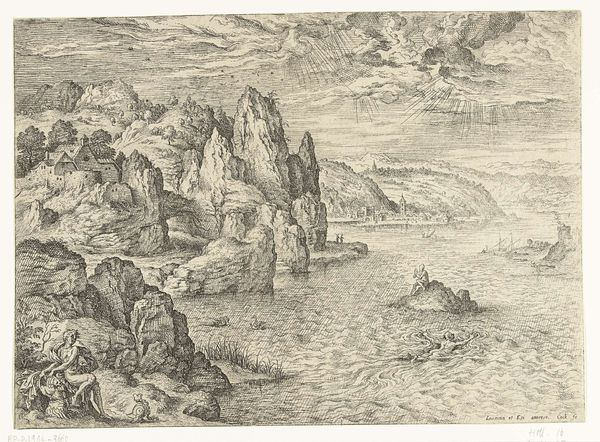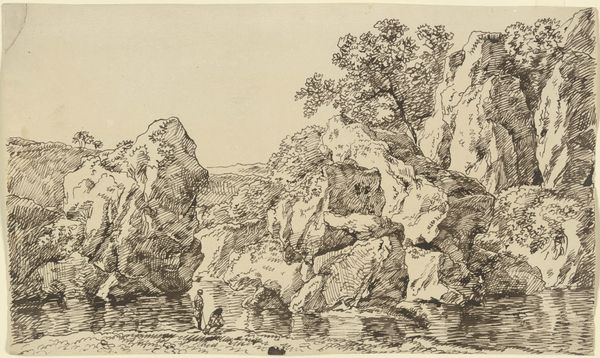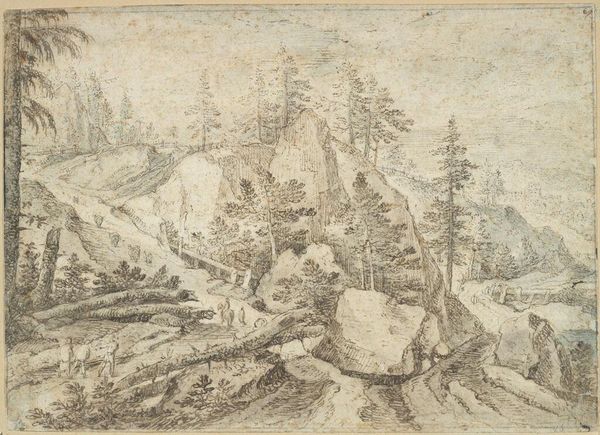
print, etching
#
baroque
#
dutch-golden-age
# print
#
etching
#
landscape
#
figuration
#
line
Dimensions: height 138 mm, width 190 mm
Copyright: Rijks Museum: Open Domain
Curator: Welcome. Before us hangs Claes Jansz. Visscher's 1613 etching, "Rotsvallei," or "Rocky Valley," held here at the Rijksmuseum. Editor: My initial reaction is one of dramatic tension. The stark, contrasting lines evoke a sense of a hidden, perhaps dangerous, place. The mountains loom. Curator: Visscher’s work exemplifies Dutch Golden Age landscape art, but with a particular emphasis. There's something almost primordial, even biblical, about the landscape he's rendered in stark lines. It evokes ideas about man in opposition to nature. Editor: I agree, that sense of opposition. Note the size of the two figures—miniscule relative to the monolithic rocks surrounding them. Do you think it's about humanity's vulnerability? Its precarious position within an immutable world? Curator: Absolutely, but also humanity’s ongoing search for meaning in relation to the unknown. Visscher skillfully uses line to create depth, suggesting a journey—not just through the valley, but perhaps also through the complexities of human experience. What do you notice about the light, or rather, the treatment of light? Editor: The absence of overt light. It’s shadow that dominates. It highlights not just the ruggedness of the terrain but implies, perhaps, the darker aspects of the human condition within such an imposing environment. Curator: Exactly. Remember that the etching would be more widely accessible. This imagery becomes not just about geographic place, but more about human psychological space. It serves as a representation of the anxieties and existential questions prevalent during the early 17th century. Editor: Placing it within that context—a period of immense social and political change, particularly in the Netherlands—it certainly reframes my viewing of it. Curator: The landscape becomes a stage upon which the human drama plays out. This tension remains so effective even centuries later because it connects us to our past. It highlights anxieties surrounding existential questions and shows how the relationship between humanity and nature is unchanged. Editor: Yes, and how artists continue to grapple with that dynamic. It’s thought-provoking to consider what such imagery represented in its own time and how these anxieties have continued into ours. Curator: Indeed. Hopefully this has encouraged some further thought for visitors about this period. Editor: Definitely. And maybe a reconsideration of how seemingly 'natural' landscapes carry immense cultural weight.
Comments
No comments
Be the first to comment and join the conversation on the ultimate creative platform.
